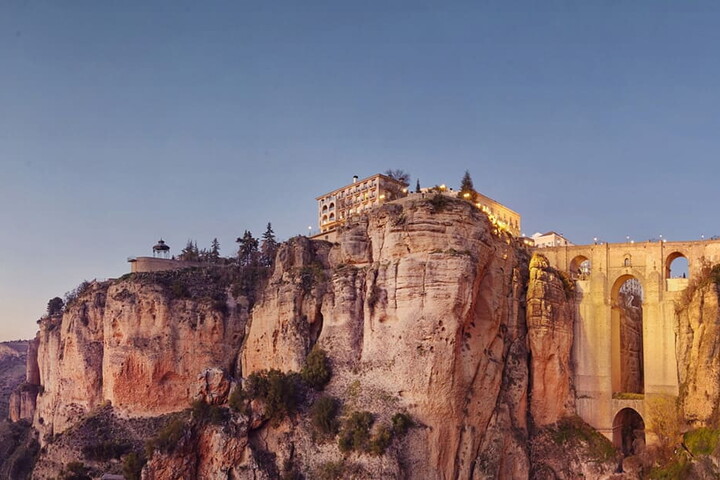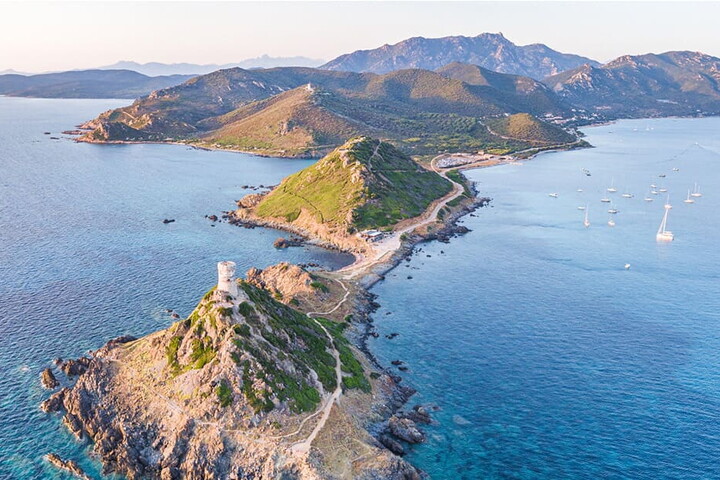Madrid and Barcelona: beautiful, bursting with attractions, always lively. This is the duality that has made Spain great. Two large cities that are visited by tourists from all over the world. But the Iberian country is so wide and “deep” that it offers many interesting ideas for the curious traveller prepared not to settle for the obvious destinations, no matter how interesting they are. We have chosen five of them, with the understanding that there could be twice as many or three times as many or even more. But these are the ones we like and so will you.

THE BEST OF ANDALUSIA
This is the hottest region of Spain: Andalusia is the birthplace of bullfighting, the tradition of tapas, and flamenco. Along with Barcelona, it is the most visited Iberian area, to a greater extent than the capital. You can wander without haste through the entire region, which extends from the Atlantic to the border with Portugal, penetrating the heart of Spain: between natural parks, the mythical Sierra Nevada, the desert of Tabernas, enjoying the sea of Cadiz and Marbella or the beauty of Málaga. The important thing is not to neglect the three main centres. Seville, the capital, is the home of Carmen, Don Juan and Figaro. It offers a number of splendid monuments, squares and gardens: from the Giralda to the Cathedral, from the Alcázar to the Plaza de España. In Cordoba, however, one must visit the Great Mosque of 785 AD, transformed into a Cathedral in 1236 at the behest of St. Ferdinand III, the archaeological site of Madinat Al-Zahara (not far away) and the Juderia - the Jewish Quarter. Finally, Granada with the famous Alhambra, a small walled city built during the Arab domination, where you will find an enchanting garden, palaces, towers, enclosed courtyards and a convent. Also beautiful is the Palazzo della Madraza, the first university in Andalusia, founded in 1349.

GETTING LOST IN LA MANCHA
Castilla La Mancha is the central region of Spain, known for the wanderings of the famous Hidalgo de La Mancha, for windmills and barren hills as far as the eye can see. A land that holds surprises far beyond its image in the world and expanding it from medieval towns, ochre-coloured castles, the Arab reminiscences and the villages surrounded by olive groves. Castile, as its name suggests, is a kingdom of castles, while the latter is an arid land with the largest desert plains in Western Europe. The territory also boasts mountain ranges of up to 1000 meters and despite the aridity in the area, the Tagus flows into the Atlantic. In Toledo - a UNESCO World Heritage Site, like Cuenca - there is the wonderful Alcazar with the attached museum. El Greco lived in the city for 37 years, which is why many of his works can be found in the most beautiful churches. An alternative way to visit the region is to follow the Ruta de Don Quixote, a signposted route that passes through the most important places in Miguel de Cervantes' great novel: from the house where Dulcinea lives to El Toboso, passing the first inn on the way and following the footsteps of the hidalgo's second exit.
BISCAY, THE HEART OF THE BASQUE COUNTRY
Overlooking the Atlantic, Biscay expresses the essence of the Basque Country at its best: it's a green territory, full of sights and colours that leave you breathless. It is no coincidence that it is called “the land of contrasts” because of the differences in the landscape and architecture of each town. The most important one is Bilbao, rich in cultural, gastronomic and natural attractions. Famous for the Guggenheim Museum, its nightlife is very different from that in Catalonia, but it is full of bars and clubs where you can dine on the typical northern delicacies - the pintxos. Not to be missed along the coast is a stop at the Monastery of San Juan de Gaxtelutxe, which stands on a rock in the middle of the sea and is connected to the mainland by a flight of steps, made famous by the TV series “Game of Thrones'”. Just as exciting - a visit to the town of Guernica, known worldwide for Picasso's masterpiece of the same name inspired by the horror of the bombing during the Spanish Civil War. You can go as far as San Sebastian, a beautiful city on the Atlantic: its proximity to France has allowed it to retain the architectural style of the Belle Epoque. It is also one of Spain's culinary “capitals” with an annual festival and a notable presence of large tables. The food, in fact, is very good.

MENORCA, THE LADY OF THE BALEARIC ISLANDS
Each Balearic Island has its own peculiarities and is chosen by a particular type of visitors. There is no doubt that Menorca is a favourite for those who do not like crowds on the beach and nightlife. It is not a coincidence that it is known as the “calm” island for its relaxed pace, peace and tranquillity. It is an enchanting island with over 80 beaches to discover, from the smallest and wildest coves to large expanses of fine sand, alternating with cliffs, pine forests, reserves and caves. Just as interesting are the villages where time seems to stand still, the archaeological remains of prehistoric civilisations and the elegant English mansions. But beyond the natural and historical aspects, Menorca also offers discreet evening entertainment with tasteful clubs. Mahón, the island's capital, alternates between historical sites and buildings and narrow streets crammed with craft shops selling local products. However, Ciutadella, the old capital - a true enchantment - is even more charming: Es Born, the most relevant place, is located in the old town and faces the Square of the same name, the location of almost all the city's festivals and social events. The three most important beaches? Cala Galdana, San Bou and Santo Tomàs.
VALENCIA, BETWEEN PAST AND FUTURE
The capital of the Comunitat Valenciana encompasses the charm of old Spain and the dynamism of modern architecture in a lively setting that respects tradition. It has a rich history, as evidenced by the numerous monuments and the locations in various styles that define its centre: Plaza de la Almoina, Torre Miguelete, Basilica de la Virgen, Lonja de la Seda (UNESCO World Heritage Site) and Plaza de Toros. The centre is also home to the picturesque and busy markets. But Valencia is most of all innovation. The urban transformation experienced by the city at the beginning of the 1990s is unique in Spain and has profoundly marked it, making it one of the most popular tourist destinations, including for sporting events. Among the main innovations that changed the face of the city was the diversion of the Turia River, along whose riverbed the Turia Gardens and the ultra-modern buildings that make up the City of Arts and Sciences, designed by Santiago Calatrava, were built. The no less impressive Assut de l'Or Bridge and the Agora are also located there, all framed by fountains and water features. Its culinary pride - the Paella, associated everywhere with Spain but actually originating in Valencia, takes its name from the metal container in which it is prepared called paellero in Valencian.




